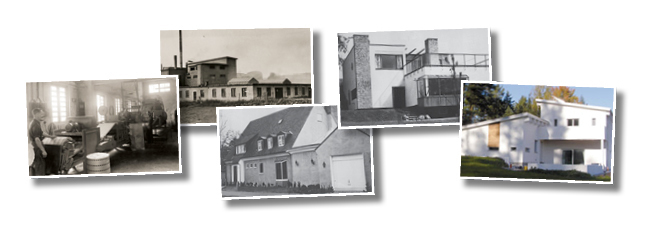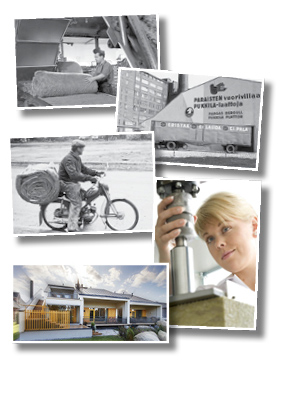
Stone Wool insulation was first introduced in Sweden 75 years ago. Even then we had plenty of foresight: insulation made from stone wool is good for both our environment and your finances.
Throughout the years, expertise has been the cornerstone of our operations. This expertise produced a number of innovations, including Europe’s first permanent-shaped insulation panels in 1948 for building insulation applications. In the 1950s, we launched technical insulation materials; solutions for the fire and thermal insulation of pipes. In the 1960s came soil insulation to keep the moisture out of house foundations, railway tracks and roads. Then, in the 1980s, we introduced our sandwich elements with steel cladding on the outside and a stone wool core, ready to be installed in facades or ceilings.
But in addition to its thermal and fire insulation capacity, stone wool has more valuable properties. We have utilised these properties in, for example, the sound-absorbing products that we have developed for comfortable acoustic settings.

 In 1952, we began the manufacture and sales of stone wool insulation materials in Finland.
In 1952, we began the manufacture and sales of stone wool insulation materials in Finland.
Our production, which started with construction insulation materials, was expanded in 1957 when we launched our first technical insulation materials. These include products such as insulation sections for the thermal and fire insulation of pipes. In the 1970s, our products got their familiar red-and-white-striped packaging. Paroc Panel System, the manufacturer of PAROC® elements, began operations in the 1980s. Sandwich elements with a mineral wool core are used in various applications, including external and partition walls and ceilings. Besides being an excellent fire and thermal insulation material, PAROC® Stone Wool also has good sound dampening properties. These are utilised in, among other solutions, our PARAFON® Acoustic Products.
 Our products are, of course, an essential part of what we do at Paroc. But we see no reason to keep our extensive expertise, accumulated from years of experience, just to ourselves – quite the opposite. We always seek to share our expertise, recommend our best solutions and actively develop the construction business.
Our products are, of course, an essential part of what we do at Paroc. But we see no reason to keep our extensive expertise, accumulated from years of experience, just to ourselves – quite the opposite. We always seek to share our expertise, recommend our best solutions and actively develop the construction business.
In the 1990s, we introduced the concept of low-energy construction. In the 2000s, we followed up with our definition of the Passive House and its certification. Our latest achievement is a refurbishment system based on industrial prefabrication. This system is currently being studied and developed as part of the Innova project. We are also actively promoting energy efficiency in the fields of building automation and process industry.